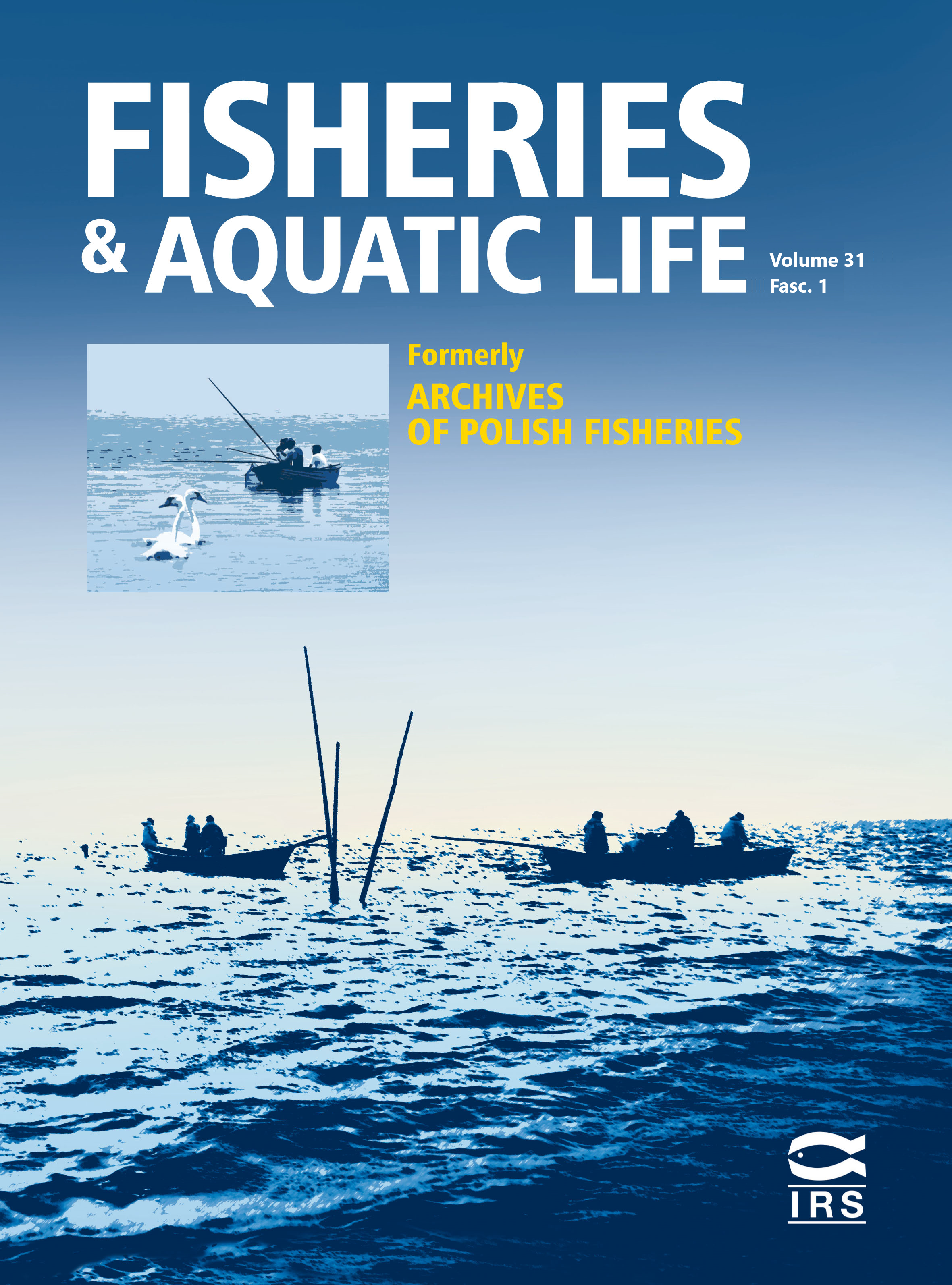Different susceptibility to body deformities in juveniles of 13 European species (Cypriniformes: Pisces) intensively fed dry formulated diet under controlled conditions
Abstract
The aim of this study was to compare the susceptibility to body deformities in juveniles of 13 common European cypriniform fish, caused by intensive feeding with the same commercial dry diet administered at 25°C according to a similar feeding schedule. The final share of individuals with body malformations differed considerably among species and was 0.0-87.0%. Unaffected by the intensive feeding were only Barbus barbus (L.), Chondrostoma nasus (L.), Cyprinus carpio L. and Leuciscus aspius (L.). They can be safely fed with the highest rations of dry diet constituting 2,5-3% of fish biomass daily. Most of the species exhibited body malformations in a short time of only 20-30 days of feeding. Abramis brama (L.), Leuciscus idus (L.), Leuciscus leuciscus (L.), Scardinius erythrophthalmus (L.), Carassius carassius (L.), Rutilus rutilus (L.) and Squalius cephalus (L.) proved to be highly prone to body deformities – daily ration of feed 2.5% of fish biomass resulted in high incidence of malformed individuals after 60 days of feeding (50-87%). For these species safe daily ration of a dry diet should not exceed 2% of total fish biomass. Tinca tinca (L.) and Vimba vimba (L.) showed medium susceptibility to body deformities (11 and 24%, respectively). They can be fed with the daily ration of a dry diet about 2,3% of fish biomass. Some regularities connected with different susceptibility to fish body deformities are discussed in the paper.

